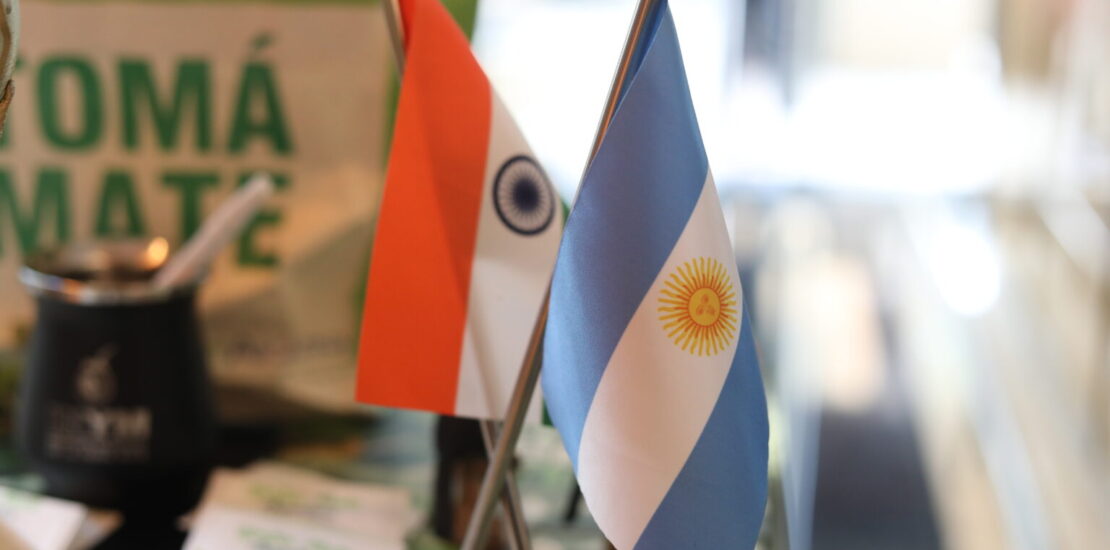India and Argentina the natural Partners?
- December 5, 2023
- Posted by: Anish
- Category: Feed

Prime Minister Narendra Modi’s efforts to outrun China and transform India’s economic model into one driven by manufacturing rather than consumption, are creating a tailwind for infrastructure and heavy-industry companies. With a road, airport, tunnel, metro or power facility under construction almost everywhere in India, the nation-building push is luring investors to the sector.
Alternatively, China, the largest economy of Asia has invested billions of dollars in Argentina through strategic projects, including lithium and solar power plants in the north and a space station in Patagonia. It also supported some of the nation’s geopolitical goals, such as its inclusion in the BRICS block. Yet some other ambitious deals, including a nuclear power plant and a port in Tierra del Fuego, the country’s southernmost province, have stalled amid tensions and Argentina’s financial shortages.
Then again, Javier Milei’s victory in Argentina’s presidential election opens a new era in South American nation’s history. Milei, the far right-pro business candidate won Argentina’s presidential election by a landslide, defeating the incumbent candidate, Economy Minister Sergio Massa, by nearly 12 percentage points, a margin nobody expected.
Milei is the only Libertarian to be elected as head of government in any country today. His beliefs may seem more relatable to the far-right. However, Argentine President-elect Milei pivoted away from advisers advocating for his most dramatic campaign promises, choosing Wall Street veterans closer to former leader Mauricio Macri. Local media also reported Milei would appoint his former rival during the election, Patricia Bullrich, as security minister, a post she held in Macri’s government too.
In addition, Milei made it to the US last week to meet with officials from the US Treasury, the White House and the International Monetary Fund in Washington. The purpose of the meetings is to explain the incoming administration’s economic plan including the fiscal adjustment, monetary reform, state reform and deregulation.
Milei also said specifically that some state companies will be privatized, such as YPF (Argentina’s state energy and gas company), Aerolíneas Argentinas, as well as public media; At the same time, he proposed a “Chilean-style” privatized public works model.
Indian Prime Minister Narendra Modi on 20 November extended his greetings to Javier Milei for winning the Argentina Presidential elections 2023, expressing his hope to expand the India-Argentina strategic partnership.
India and Argentina Fusion:
India ranks as Argentina’s fourth largest trading partner, with bilateral trade reaching an all-time high of USD 6.4 billion in 2022, and the potential to reach USD 25 billion in the next decade. The exchange of goods between India and Argentina encompasses a diverse array of commodities. India exports petroleum oils, agrochemicals, yarn-fabric-made ups, organic chemicals, bulk drugs, and two-wheelers to Argentina. Conversely, Argentina exports vegetable oils, finished leather, cereals, residual chemicals, allied products, and pulses to India. This mutually beneficial trade arrangement forms a robust foundation for their economic collaboration.
At the same time, Argentina has invited Indian companies to invest in Lithium Mining. There are complementarities between India and Argentina regarding critical minerals like Lithium and Copper which are required for electric vehicles and sustainable energy solutions, as India had a huge demand for these metals given the investments in building the Manufacturing Industry and Argentina has huge reserves of these minerals. India should source Lithium directly from Argentina rather than from China and reduce dependence on China. Presently, China is India’s leading supplier of lithium.
Soccer, Tango, Story-Telling, and Yerba Mate for which Argentina is famous, blends beautifully with the Indian cultural forms, Bollywood, music and spiritual practices like yoga. Argentina is the main source of soybean oil for India. Argentina and Brazil are the largest producers of the tan-coloured legume. Annually, India imports nearly 15-16 million tonnes of various edible oils annually, including 3.5 to 4.0 million tonnes of soyabean oil mainly from Latin America, according to media reports.
India is spending big on infrastructure with an aim to make India a developed nation by 2047. The world’s fifth-largest economy is tipped to become the third biggest by 2027, according to IMF estimates. India would need strategic partners to fulfil its huge commodity demands. Latin America and Argentina’s capabilities in producing and supplying raw materials gives it a very special edge when it comes to trade with India.
